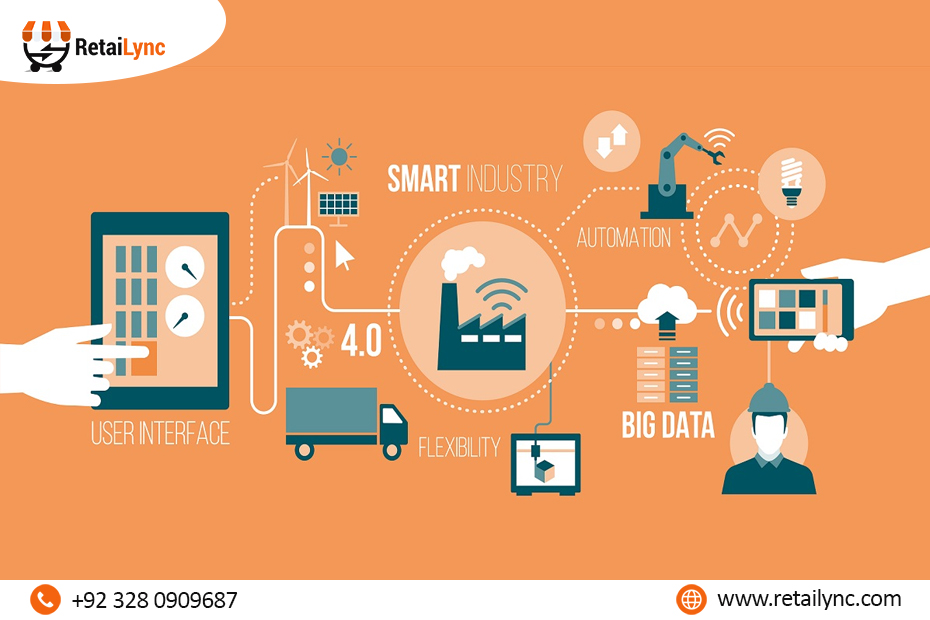The increasing complexity of supply chains, combined with evolving customer demands, requires businesses to make informed, data-driven decisions. Enter Big Data and Analytics—a revolutionary approach that has become a game-changer for optimizing distribution networks.
At the heart of this transformation lies the powerful synergy between Big Data and advanced analytics, enabling distributors to uncover insights that were previously hidden. With tools like RetaiLync, an advanced ERP for distributors, businesses can efficiently manage their operations, reduce costs, and enhance overall performance. Here’s how Big Data and Analytics are reshaping distribution management.
Big Data and Analytics are the compass that guide distribution networks toward efficiency, precision, and customer-centric excellence, transforming raw data into actionable insights that drive smarter, faster, and more informed decisions.
Understanding Big Data in Distribution
Big Data refers to the massive volumes of data generated across the supply chain—from production, warehousing, and transportation to customer interactions. This data encompasses various formats, including transactional data, customer feedback, IoT sensor data from warehouses, and real-time transportation updates.
Traditionally, distributors relied on intuition or historical trends to forecast demand or optimize routes. However, these approaches often led to inefficiencies and stock mismanagement. Today, with a distribution management system like RetaiLync, data can be collected, processed, and analyzed in real time to deliver actionable insights.
Key Benefits of Big Data and Analytics in Distribution Networks
-
Demand Forecasting and Inventory Management Using advanced analytics, businesses can predict customer demand more accurately. By analyzing historical data and market trends, distributors can adjust inventory levels to meet demand without overstocking or understocking. This enhances customer satisfaction and reduces operational costs.
-
Route Optimization Big Data analytics can process traffic patterns, delivery schedules, and vehicle performance data to optimize delivery routes. This not only ensures timely deliveries but also minimizes fuel costs and reduces the carbon footprint of distribution operations.
-
Supplier and Vendor Management With the right distributor management system, businesses can track supplier performance, lead times, and costs. This helps in selecting reliable suppliers and negotiating better terms, improving overall supply chain efficiency.
-
Enhanced Customer Insights By analyzing customer purchase behavior and preferences, distributors can offer personalized solutions, optimize product assortments, and improve service delivery. Big Data allows companies to move from reactive to proactive customer service, creating stronger relationships and boosting retention.
-
Operational Efficiency Advanced analytics can identify bottlenecks in the distribution process, such as delays in warehousing or transportation. With RetaiLync’s ERP for distributors, businesses can pinpoint inefficiencies, streamline workflows, and ensure smoother operations across all stages of the supply chain.
How RetaiLync Leverages Big Data for Optimized Distribution
As an advanced distribution management system, RetaiLync is designed to harness the power of Big Data and analytics for optimizing distribution networks. By integrating real-time data analysis, predictive modeling, and AI-driven recommendations, RetaiLync helps distributors make smarter decisions. Here are some ways RetaiLync stands out:
-
Real-time Visibility: RetaiLync offers real-time data monitoring, enabling businesses to track inventory levels, shipment statuses, and customer orders instantly.
-
Predictive Analytics: Leveraging historical data, RetaiLync predicts demand fluctuations and prepares businesses for peak periods, reducing downtime and ensuring stock availability.
-
Data-Driven Decision Making: The platform’s built-in analytics provide actionable insights that allow distributors to adjust strategies on the fly, optimizing routes, managing resources, and improving customer service.
-
Seamless Integration: RetaiLync integrates with other enterprise tools to provide a unified view of operations, helping businesses align sales, procurement, and logistics for greater efficiency.
Conclusion:
In an increasingly data-driven world, distributors must evolve beyond traditional methods to stay competitive. Big Data and Analytics are no longer just buzzwords—they are essential tools for optimizing distribution networks. With an advanced distribution management system like RetaiLync, businesses can unlock the full potential of their data to enhance efficiency, reduce costs, and improve customer satisfaction.
By leveraging cutting-edge technology, distributors can not only meet today’s demands but also position themselves for future success.

